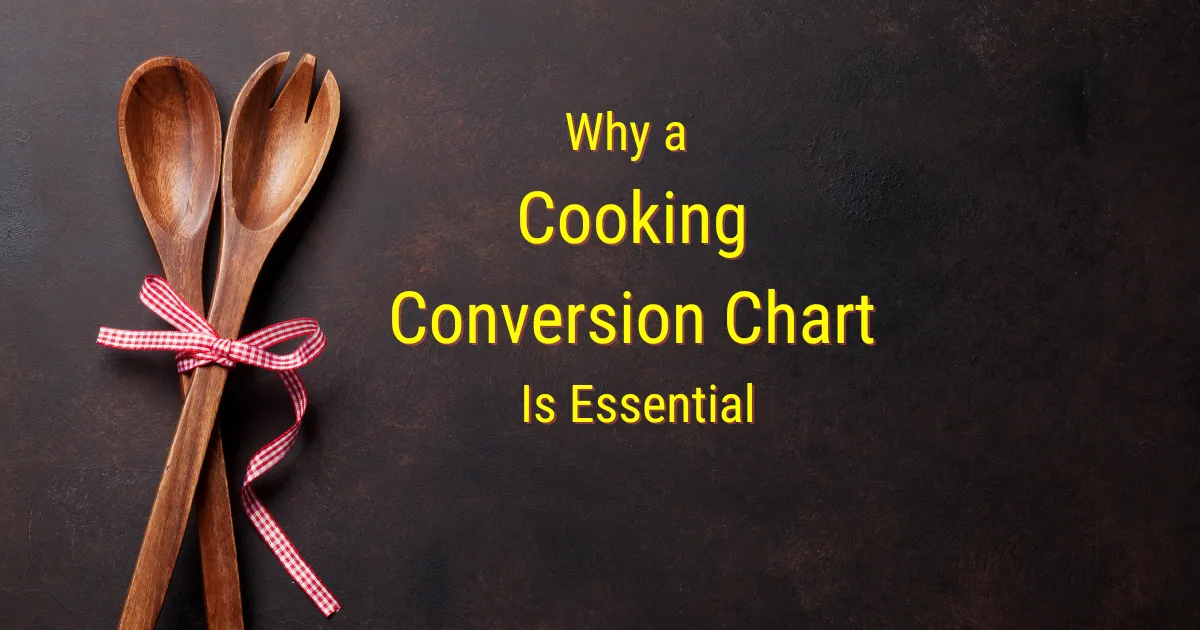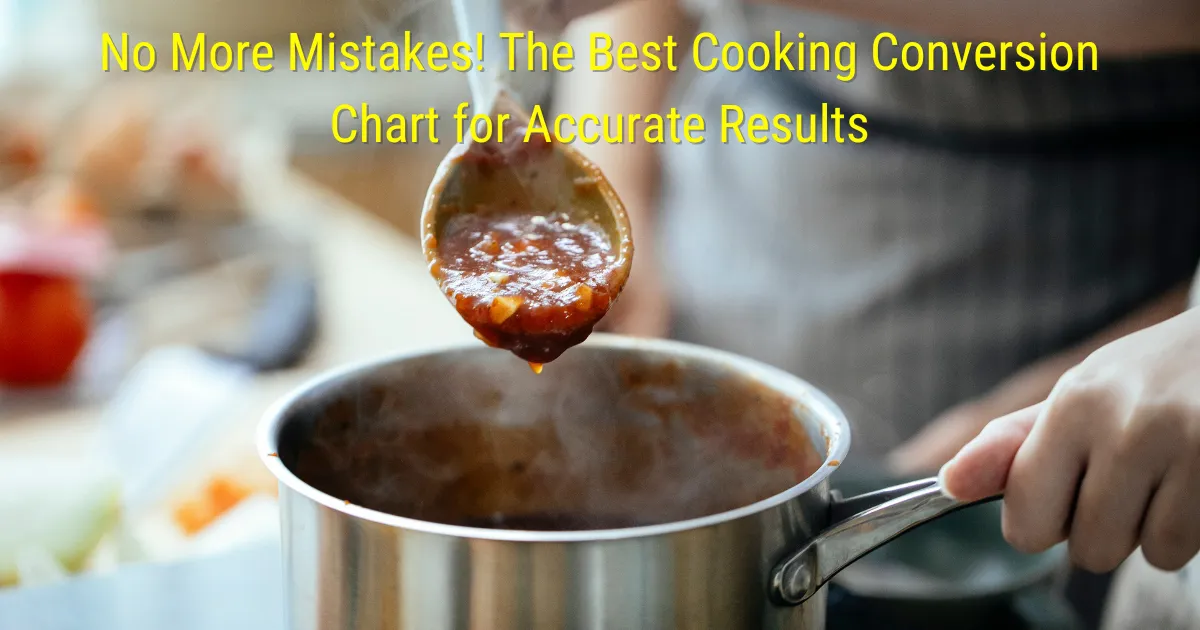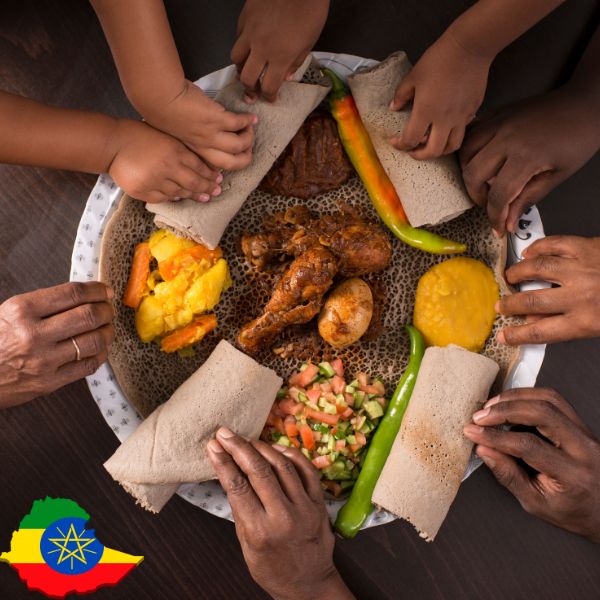Last updated on September 9th, 2025 at 12:45 pm
Unit Conversion Calculator: Say goodbye to kitchen guesswork! Use this ultimate cooking measurements conversion chart to easily convert between cups, tablespoons, teaspoons, and ounces. Perfect for mastering recipes with precision
These conversions are essential because recipes developed outside the United States call for grams instead of ounces. In baking, precise ingredient quantities can be crucial.
No More Mistakes! Unit Conversion Calculator for Accurate Results
Whether you’re a seasoned chef or a home cook, we’ve all been there—struggling to convert measurements for a recipe that uses unfamiliar units. One cup to grams, tablespoons to milliliters, or converting ounces into teaspoons can quickly become confusing! Cooking should be enjoyable, not stressful. That’s why having a reliable cooking measurements conversion chart is vital to success in the kitchen.
With this ultimate cooking conversion guide, you can whip up any recipe without second-guessing, ensuring that your meals turn out perfectly every time. Let’s explore why you need a conversion chart and some common cooking measurement conversions.
Why a Cooking Conversion Chart Is Essential
Cooking is often referred to as both an art and a science. While creativity is encouraged in the kitchen, precision is key in measurements—especially in baking, where even slight variations can lead to a recipe disaster. The wrong measurement can lead to undercooked or overcooked dishes, too much sweetness, or too much salt, ruining the final product.
With a conversion chart on hand, you can easily switch between metric and imperial systems, making it possible to recreate recipes from all over the world. Whether you’re converting grams to ounces or cups to milliliters, having these conversions readily available ensures your recipes are accurate and consistent.
Volume (Liquid) Conversions
- 1 teaspoon (tsp) = 5 milliliters (ml)
- 1 tablespoon (tbsp) = 15 milliliters (ml)
- 1 cup = 240 milliliters (ml)
- 1 pint (US) = 473 milliliters (ml)
- 1 quart (US) = 946 milliliters (ml)
- 1 gallon (US) = 3.785 liters (L)
Weight (Solid Ingredients) Conversions
- 1 ounce (oz) = 28 grams (g)
- 1 pound (lb) = 453 grams (g)
- 1 kilogram (kg) = 1,000 grams (g)
Dry Ingredients (Flour, Sugar, etc.) Conversions
- 1 cup all-purpose flour = 120 grams (g)
- 1 cup granulated sugar = 200 grams (g)
- 1 cup brown sugar (packed) = 220 grams (g)
- 1 tablespoon flour = 8 grams (g)
- 1 tablespoon sugar = 12 grams (g)
Temperature Conversions
- Fahrenheit to Celsius: (°F − 32) × 5/9 = °C
- Celsius to Fahrenheit: (°C × 9/5) + 32 = °F
Butter Conversions
- 1 stick of butter (US) = 1/2 cup = 113 grams (g)
- 1 tablespoon butter = 14 grams (g)
Why Precision Matters in the Kitchen – Unit Conversion Calculator
Accuracy measurements are essential, especially for baking, where ingredient ratios are crucial to success. For example, too much flour can dense your baked goods, while too little liquid can dry them. Precision in your ingredient measurements helps ensure that the flavors and textures are balanced, leading to better and more consistent results every time.
Similarly, the same recipe made in different regions often uses different measuring units. A recipe from the UK might list ingredients in grams, while an American recipe will use cups and ounces. A conversion chart helps bridge the gap between these systems, making it easier for you to try recipes from various cuisines around the globe.
How to Use the Conversion Chart
Refer to your cooking conversion chart anytime you need to change a measurement in a recipe. Whether you’re doubling a recipe, converting between metric and imperial units, or scaling down a dish, the chart helps you quickly and confidently adjust your ingredients.
Consider printing your conversion chart and hanging it on your fridge or storing it near your recipe books for easy cooking access. This way, you never have to pause mid-recipe to search for conversions online!
Conclusion
There’s no need to guess in the kitchen anymore. With this comprehensive cooking conversion chart, you’ll be confident to tackle any recipe without fear of miscalculating measurements. Whether cooking, baking, or just trying out new cuisines, this tool ensures accurate results every time.
Take the guesswork out of cooking and enjoy stress-free meal preparation with this ultimate conversion guide. Happy cooking!
Grams and Ounces Conversion
| Topic | Information |
|---|---|
| How Many Grams Are In An Ounce? | There are 28.346 grams in an ounce. This is consistent regardless of what you’re measuring because both ounces and grams are methods of measuring weight. So, whether the question is “how many grams are in an ounce of silver,” “gold,” or even “protein,” the answer is always 28 grams! |
| What Is An Ounce? | The term ounce comes from the Roman term “uncia.” An uncia was 1/12th of a Roman copper bar used to measure an inch's length and an ounce's weight. Modern ounce weight and volume measurements come from Britain. A fluid ounce is 1/16th of a pint. A dry ounce weighs 1/16 of a pound or 28.346 grams. The United States, Liberia, and Myanmar are the only nations still using ounces. |
| What Is A Gram? | The gram was introduced in France following the French Revolution. In 1795, a decree redefined the metric system and defined the gram as the weight of one cubic centimeter of water. The French fully embraced the metric system at that time. |
| Topic | Information |
|---|---|
| How Many Grams Are In A Pound? | There are 453.592 grams in a pound. This is the same regardless of what you’re measuring because both pounds and grams are methods of measuring weight. |
| What Is A Pound? |
A pound is equal to 453.592 grams (g), or 0.4536 kilograms (Kg). The abbreviation "lbs" comes from the Latin word "libra," which refers to a balance or scale. "lb" is derived from the first two letters, and the "s" indicates the plural form. Historically, the pound was defined as 5,400 grains (approx. 0.350 kg). Later, the Troy pound (6,750 grains or ~0.453 kg) replaced it in 1527. Today, the pound is used primarily in the United States, Liberia, and Myanmar. Most other countries use the metric system. |
| What Is A Gram? |
The gram was introduced in France after the French Revolution. In 1795, it was defined as the weight of one cubic centimeter of water. It was part of the broader effort to create a standardized metric system and eliminate complex local measurements. |
| Converting Grams To Pounds - Cooking Measurements | These conversions are essential for cooking, especially baking, where precision matters. Recipes outside the U.S. often use grams instead of pounds. |
How Many Cups Are In A Liter?
| Measurement | Equivalent |
|---|---|
| 1 Liter | 4.227 cups |
| 1 Liter | 33.8 fluid ounces |
| Rounded Estimate | 4 cups + 1/4 cup |
| ½ Liter | 2 cups + 2 tablespoons |
Quick Conversion Chart - Unit Conversion Calculator
| Imperial Unit | Metric Equivalent (Liters) |
|---|---|
| 1 Cup | 0.236 Liters |
| 1 Pint | 0.47 Liters |
| 1 Quart | 1.06 Liters |
| 1 Gallon | 3.78 Liters |
What Is A Cup?
|
The “cup” is an Imperial measurement. It was standardized by Fannie Farmer in 1896, Director of the Boston Cooking School.
Before that, recipes used vague terms like “a handful” or “a generous amount.” Standard cup measurements improved consistency in recipes. |
What Is A Liter?
|
The “liter” is a metric unit introduced in France in 1795 after the fall of the monarchy. In 1901, it was officially defined as the volume occupied by 1 kilogram of pure water.
It's the closest metric equivalent to the imperial quart. |
Liters to Cups, Pints, Quarts, and Gallons Conversion Table - Cooking Measurements
| Liters | Cups | Pints | Quarts | Gallons |
|---|---|---|---|---|
| 0.5 liters | 2.12 cups | 1.06 pints | 0.53 quarts | 0.13 gallons |
| 1 liter | 4.23 cups | 2.11 pints | 1.06 quarts | 0.26 gallons |
| 2 liters | 8.46 cups | 4.22 pints | 2.12 quarts | 0.53 gallons |
| 5 liters | 21.15 cups | 10.55 pints | 5.30 quarts | 1.32 gallons |
| 10 liters | 42.30 cups | 21.10 pints | 10.60 quarts | 2.64 gallons |







February 1, 2025 at 3:36 pm[…] themselves contain significant amounts of healthy fats? And while there are over 600 calories each ounce, walnuts are low in carbs and rich in […]